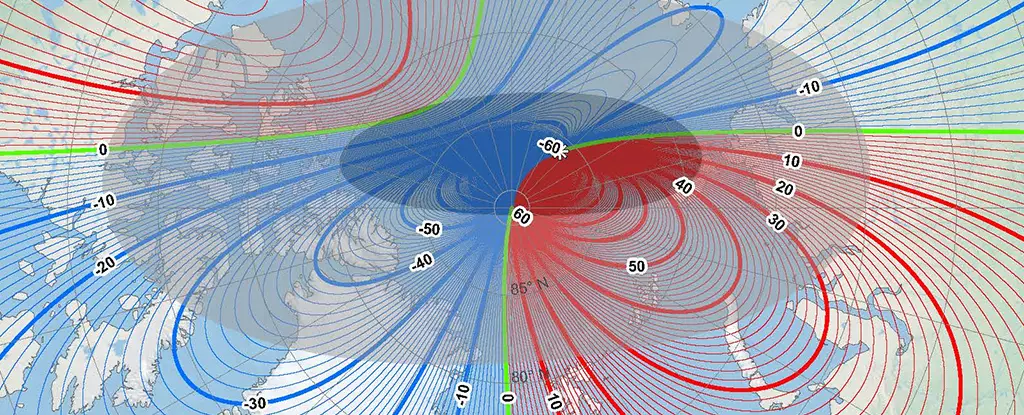Every five years, the magnetic North Pole undergoes a recalibration process that affects navigation systems globally, from ships at sea to planes soaring through the skies. This year, experts from the US National Oceanic and Atmospheric Administration (NOAA) and the British Geological Survey (BGS) have worked together to produce a new iteration of the World Magnetic Model (WMM), which reflects the pole’s ongoing movement away from Canada towards Siberia. Interestingly, while the geographical North Pole remains fixed at the axis of Earth’s rotation, the magnetic North Pole constantly shifts due to changes in the planet’s molten iron and nickel core.
In a world where accurate navigation is vital for both travel and commerce, understanding exactly where the magnetic North Pole lies is crucial. As William Brown, a geomagnetic field modeller at BGS, points out, the movement observed in recent years is unprecedented. For centuries, magnetic north showcased a slow drift across Canada. However, the last two decades have witnessed a marked acceleration towards Siberia, culminating in a notable deceleration that surprised experts. This consolidation of data highlights the ever-evolving nature of Earth’s magnetic field and underlines the importance of consistent updates to navigation systems.
Research indicates that the movement of the magnetic North Pole may be influenced by two significant magnetic lobes located under Canada and Siberia. These lobes cause fluctuations in Earth’s magnetic field, leading to notable directional shifts. The dynamics of this phenomenon can be so pronounced that emergency updates become necessary, necessitating real-time adjustments outside of the standard five-year cycle.
Future navigation could greatly benefit from these findings. With a higher spatial resolution for the newly updated WMM, this model boasts over ten times more detail than previous versions. Imagine navigating from South Africa to the UK; if you relied on an outdated model, you could be off course by as much as 150 kilometers (about 93 miles) by the journey’s conclusion. Such discrepancies highlight why precision in mapping and navigation is paramount for logistics companies, governmental agencies, and operational fleets around the world.
An important aspect of the 2024 magnetic North Pole update is that it will be seamlessly integrated into navigation systems worldwide. For the average user, this means no cumbersome task of updating devices, as the adjustments will be implemented automatically through GPS software. As technology continues to evolve, users can expect the benefits of improved navigation accuracy without the hassle of manual updates.
Furthermore, the implications of these advancements stretch beyond simple navigation. They can impact a range of industries that rely on precise geographic data, from shipping and aviation to scientific research and environmental monitoring. Accurate navigation is critical for the safety and efficiency of sectors dependent on geographic positioning.
Historical Context and the Journey Ahead
The magnetic North Pole has a long history, first officially identified by Sir James Clark Ross in northern Canada in 1831. Since then, scientists have refined their methods for tracking its movement, drawing on ground measurements and satellite data. While initial tracking methods were rudimentary, the application of advanced technologies has allowed for unprecedented precision.
As we navigate the complexities of the modern world, understanding geological phenomena like the shifting of the magnetic North Pole becomes essential. Increased accessibility to high-resolution data means we have better tools at our disposal, but it also requires us to remain adaptable in the face of change.
Looking forward, the future of navigation may involve leveraging new technologies and methodologies to further enhance our understanding of Earth’s magnetic field. With the ability to anticipate shifts and develop swift responses, researchers and navigators can be better prepared for the unpredictable nature of our planet’s geomagnetic behavior. In this ongoing journey of discovery, continuous learning and adaptation will remain critical as we strive for reliable navigation in an ever-changing world.

